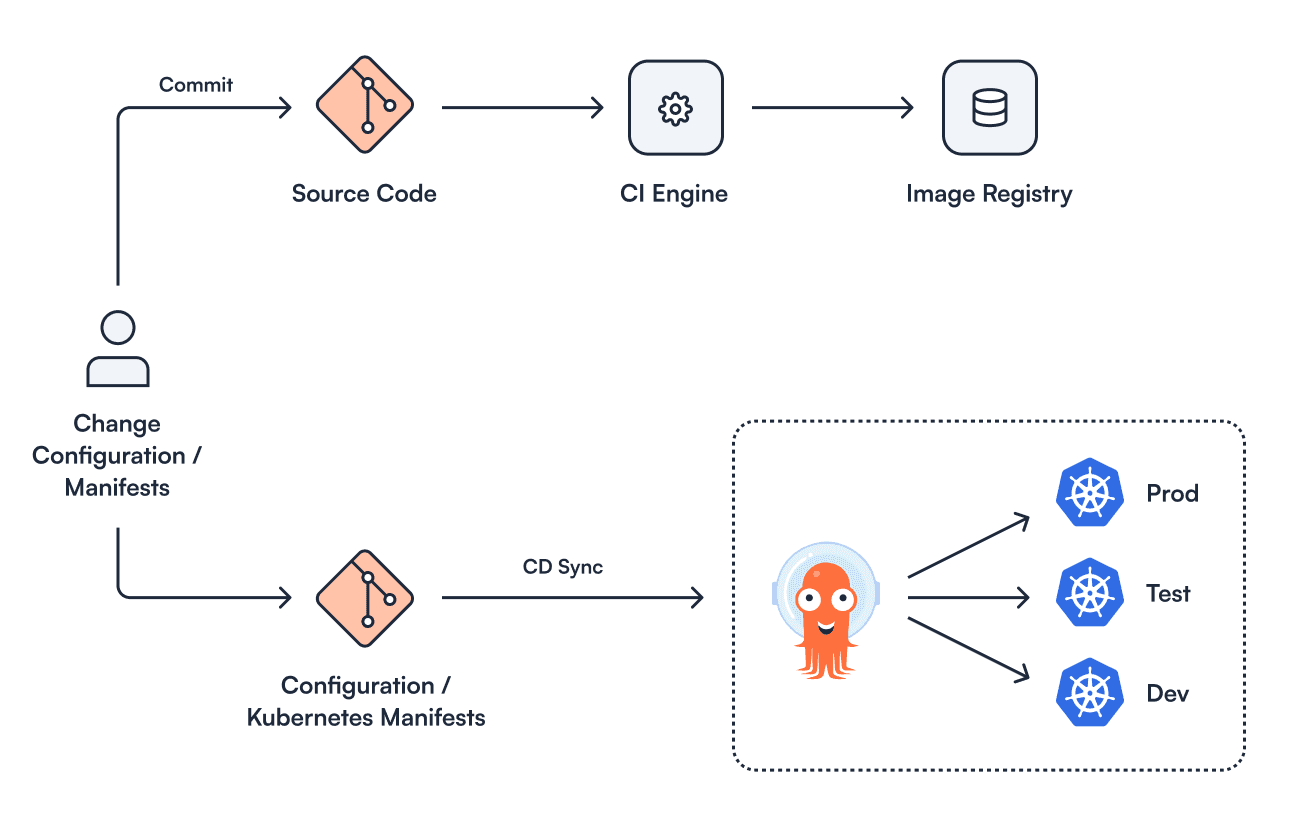GitOps explained
What is GitOps?
GitOps is a set of best practices applied to a workflow reconciling a declared system state or configuration according to data stored in a git repository. These practices leverage a source control system like Git as the “single source of truth” and extend this practice to applications, infrastructure, and operational procedures.
How to use it?
GitOps Use Cases
GitOps helps your team work better by efficiently updating apps in Kubernetes. It lets you roll out changes safely, improve security, and manage multiple clusters without much effort.

Continuous delivery of application configurations

Applying Progressive Release strategies

Rolling out infrastructure to Kubernetes

Deploying to multiple Kubernetes clusters

Quick disaster recovery

Synchronizing secrets

Detecting configuration drift

Introducing secure separation of concerns
How GitOps benefits your team
GitOps Benefits
GitOps is like a recipe book for your infrastructure. You write down how you want it to look in code, and it automatically becomes that way. It's faster, safer, and less error-prone.

Velocity

Developer-centricity

Instant rollout and rollback

Auditability

Self-documented code (Infrastructure as Code)

Observability

Increased stability and reliability



